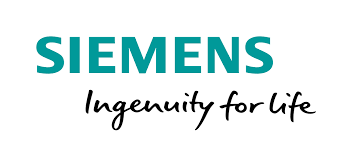US Ethanolamine Market Industry Overview, Size, Share, Growth Trends, Research Insights and Forecast (2025–2032)
The US Ethanolamine Market size was valued at USD 3589.42 Mn. in 2024 and the total US Ethanolamine revenue is expected to grow at a CAGR of 7.5% from 2025 to 2032, reaching nearly USD 6401.66 Mn. in 2032.
Format : PDF | Report ID : SMR_1647
US Ethanolamine Market Overview
Ethanolamines, formed by ammonia and ethylene oxide, find diverse applications including surfactants, cement grinding, herbicides, and gas treatment. Demand from agriculture and construction drives market growth. However, their use, especially in healthcare, rises environmental and health concerns due to increased chemical oxygen demand and total nitrogen, acting as constraints for the US Ethanolamine market. Ethanolamine consumption at around 60% for gas treating, with other significant uses in soaps, detergents, personal care products, herbicides, pesticides, pharmaceuticals, and pulp and paper production.
The report actively researches the dynamic landscape of the US Ethanolamine Market, providing detailed analysis and strategic insights for stakeholders. It investigates nuanced trends, drivers, challenges, and opportunities. Using meticulous methodology combining primary and secondary research, the report unveils complex market dynamics, consumer behavior, regulatory frameworks, and competitive landscapes. It accurately outlines the market's current dimensions, growth patterns, size, and significant trends. Additionally, it keenly identifies pivotal factors driving US Ethanolamine market growth and highlights growing opportunities.

To get more Insights: Request Free Sample Report
US Ethanolamine Market Dynamics:
Growing Demand from Soaps & Detergents Industry to Drive the US Ethanolamine Market.
The US Ethanolamine Industry increasing demand drives economic growth, creating jobs across manufacturing, logistics, and supply chains. The surge in production encourages innovation and research, enhancing product quality. The resulting economic activity boosts tax revenues, supporting public services and infrastructure development, ultimately elevating standards of living through improved hygiene and sanitation.
Additionally, US Ethanolamine Market production poses environmental challenges, contributing to air and water pollution. Its use in cleaning products raises concerns about micro plastic pollution. Growing demand strains resources, risking depletion and price fluctuations. Health risks necessitate strict safety measures and regulations. Ethanolamine price spikes strain consumer budgets, raising ethical dilemmas about production practices and labour conditions, emphasizing the need for responsible sourcing and ethical manufacturing.
The US ethanolamine market growth driven by the soaps and detergents industry brings economic benefits, job creation, and social improvements. However, balancing this with responsible production, sustainable sourcing, and stringent regulations is essential. Advancements in green technologies, circular economy principles, and heightened consumer awareness mitigate negative impacts. Collaborative efforts among stakeholders, governments, and environmental organizations are pivotal for sustainable growth, emphasizing the need for a balanced approach toward economic and environmental responsibility.
US Ethanolamine Market Segment Analysis
Based on Type, the Monoethanolamine (MEA)segment held the largest market share of about 50% in the US Ethanolamine Market in 2024.According to the STELLAR analysis, the segment is expected to grow at a CAGR of 7.6 % during the forecast period. It stands out as the dominant segment within the US Ethanolamine Market thanks to its rapid technological advancement and growing adoption of smart devices with data connectivity and integration.

MEA (Monoethanolamine) demonstrates high gas treating efficiency by effectively capturing acidic gases such as CO2 and H2S from natural gas streams, ensuring cleaner fuel and compliance with environmental standards. Its versatility covers to chemical production, personal care products, pulp and paper, and the textile industry, making it a cost-effective choice compared to alternatives like DEA and TEA.
The US ethanolamine market environmental concerns arise with MEA due to its volatility and CO2 absorption, contributing to greenhouse gas emissions. Its production and use generate wastewater with harmful contaminantes. Health risks include skin, eye, and respiratory irritation, requiring safety measures. MEA's corrosiveness to metals adds equipment costs, and regulatory restrictions on emissions and wastewater disposal increase operational complexities and costs.
MEA is vital in the US ethanolamine market thanks to its effectiveness, applications, and affordability. Ongoing research aims to address sustainability and environmental concerns.
|
US Ethanolamine Market Scope |
|
|
Market Size in 2024 |
USD 3589.42 Million |
|
Market Size in 2032 |
USD 6401.66 Million |
|
CAGR(2025-2032) |
7.5% |
|
Historic Data |
2019-2024 |
|
Base Year |
2024 |
|
Forecast Period |
2025-2032 |
|
Segment Scope |
By Type
|
|
By Application
|
|
Leading Key Players in the US Ethanolamine Market
- DOW,
- BASF
- Ineos Oxides
- Huntsman
- Akzo Nobel
- Nippon Shokubai
- Mitsui Chemicals
- KPX Green
- Arak Petrochemical Company
- OUCC
- Yinyan Specialty Chemicals
- Jiahua
- Xian Lin Chemical
- Maoming Petro?Chemical Shihua
- JLZX Chemical
Frequently Asked Questions
Stringent regulation and Rising costs are expected to be the major restraining factors for the US Ethanolamine market growth.
The US Ethanolamine Market size was valued at USD 3589.42 Million in 2024 and the total US Ethanolamine revenue is expected to grow at a CAGR of 7.5% from 2025 to 2032, reaching nearly USD 6401.66 Million By 2032.
1. US Ethanolamine Market: Research Methodology
1.1. Research Data
1.1.1. Secondary Data
1.1.2. Primary Data
1.2. Market Size Estimation
1.2.1. Bottom-Up Approach
1.2.2. Top-Down Approach
1.3. Market Breakdown and Data Triangulation
1.4. Assumptions
2. US Ethanolamine Market: Executive Summary
2.1. Market Overview
2.2. Market Size (2024) and Forecast (2025 - 2032) and Y-O-Y%
2.3. Market Size (USD) and Market Share (%) – By Segments
3. US Ethanolamine Market: Competitive Landscape
3.1. SMR Competition Matrix
3.2. Competitive Landscape
3.3. Key Players Benchmarking
3.3.1. Company Name
3.3.2. Headquarter
3.3.3. Product Segment
3.3.4. End-User Segment
3.3.5. Y-O-Y%
3.3.6. Revenue (2024)
3.3.7. Profit Margin
3.3.8. Market Share
3.3.9. Company Locations
3.4. Market Structure
3.4.1. Market Leaders
3.4.2. Market Followers
3.4.3. Emerging Players
3.5. Consolidation of the Market
3.5.1. Strategic Initiatives and Developments
3.5.2. Mergers and Acquisitions
3.5.3. Collaboration and Partnerships
3.5.4. Product Launches and Innovations
4. US Ethanolamine Market: Dynamics
4.1. Market Trends
4.2. Market Drivers
4.3. Market Restraints
4.4. Market Opportunities
4.5. Market Challenges
4.6. PORTER’s Five Forces Analysis
4.6.1. Intensity of the Rivalry
4.6.2. Threat of New Entrants
4.6.3. Bargaining Power of Suppliers
4.6.4. Bargaining Power of Buyers
4.6.5. Threat of Substitutes
4.7. PESTLE Analysis
4.7.1. Political Factors
4.7.2. Economic Factors
4.7.3. Social Factors
4.7.4. Technological Factors
4.7.5. Legal Factors
4.7.6. Environmental Factors
4.8. Technological Roadmap
4.9. Value Chain Analysis
4.10. Regulatory Landscape
5. US Ethanolamine Market Size and Forecast by Segments (by Value USD Million)
5.1. US Ethanolamine Market Size and Forecast, By Type (2024-2032)
5.1.1. Monoethanolamine (MEA)
5.1.2. Diethanolamine (DEA)
5.1.3. Triethanolamine (TEA)
5.2. US Ethanolamine Market Size and Forecast, By Application (2024-2032)
5.2.1. Surfactant in Personal Care
5.2.2. SuAgrochemical Production
5.2.3. SuGas Treatment
5.2.4. SuConstruction55
5.2.5. SuWood Preservation
6. Company Profile: Key players
6.1. DOW,
6.1.1. Company Overview
6.1.2. Financial Overview
6.1.2.1. Total Revenue
6.1.2.2. Segment Revenue
6.1.3. Product Portfolio
6.1.4. SWOT Analysis
6.1.5. Business Strategy
6.1.6. Recent Developments
6.2. BASF
6.3. Ineos Oxides
6.4. Huntsman
6.5. Akzo Nobel
6.6. Nippon Shokubai
6.7. Mitsui Chemicals
6.8. KPX Green
6.9. Arak Petrochemical Company
6.10. OUCC
6.11. Yinyan Specialty Chemicals
6.12. Jiahua
6.13. Xian Lin Chemical
6.14. Maoming Petro?Chemical Shihua
6.15. JLZX Chemical
7. Key Findings
8. Industry Recommendations
8.1. Strategic Recommendations
8.2. Future Outlook
















